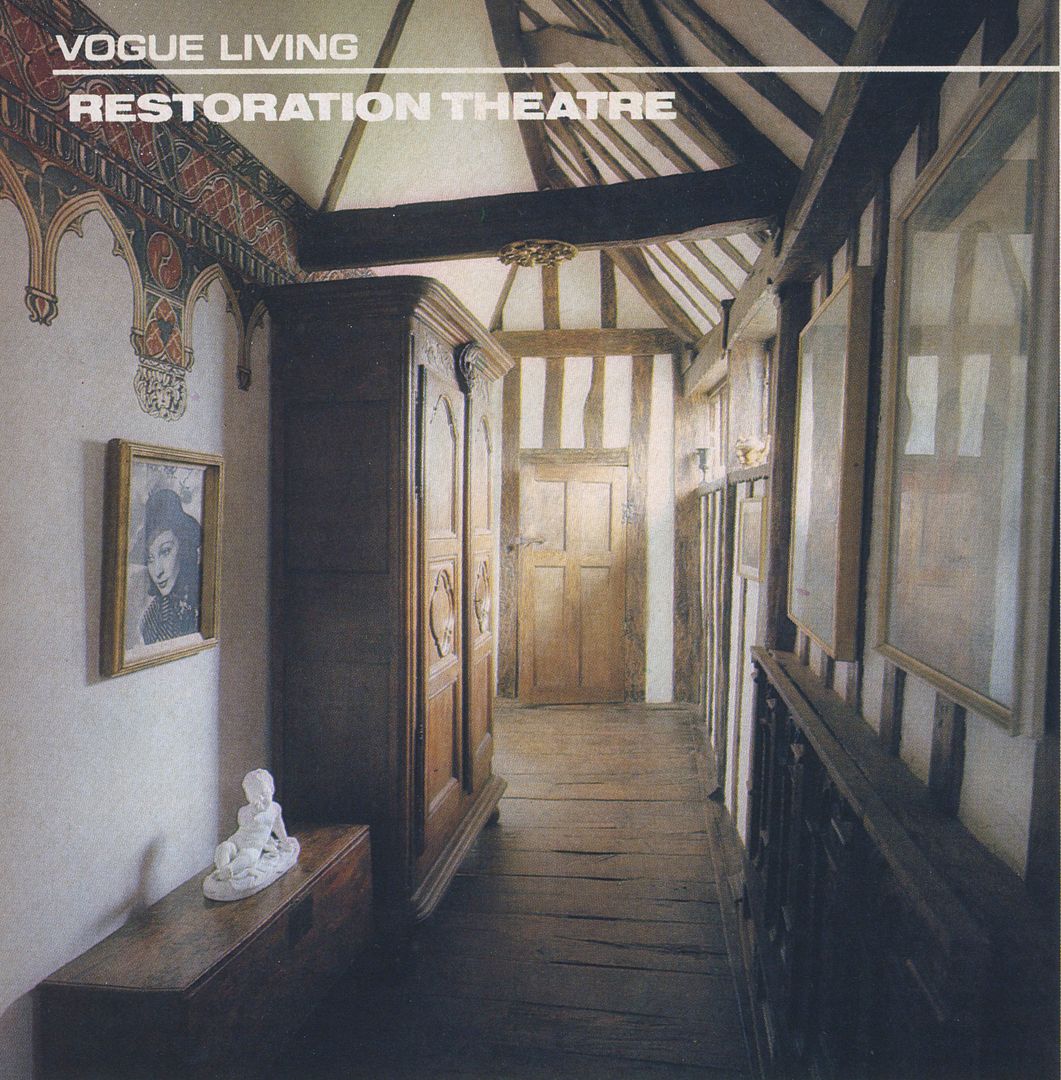
The landing at Flemings Hall, lathe and plaster restored, oak cupboard, silk-screened frieze, portrait of Vivien Leigh, all the work of Angus McBean.
I had been working on this post last week but hadn't had time to finish it, so I was quite surprised yesterday when I saw on my phone that it had been published. None of the captions were right and the text was not there, so even if you saw it yesterday please look these photos over again as they are much more informative! I also received two lovely comments on the prior incarnation of this post, which I sadly lost in my haste to delete it yesterday.
Anyway, this is the rather marvelous home of Angus McBean, the photographer. I adore the combination of
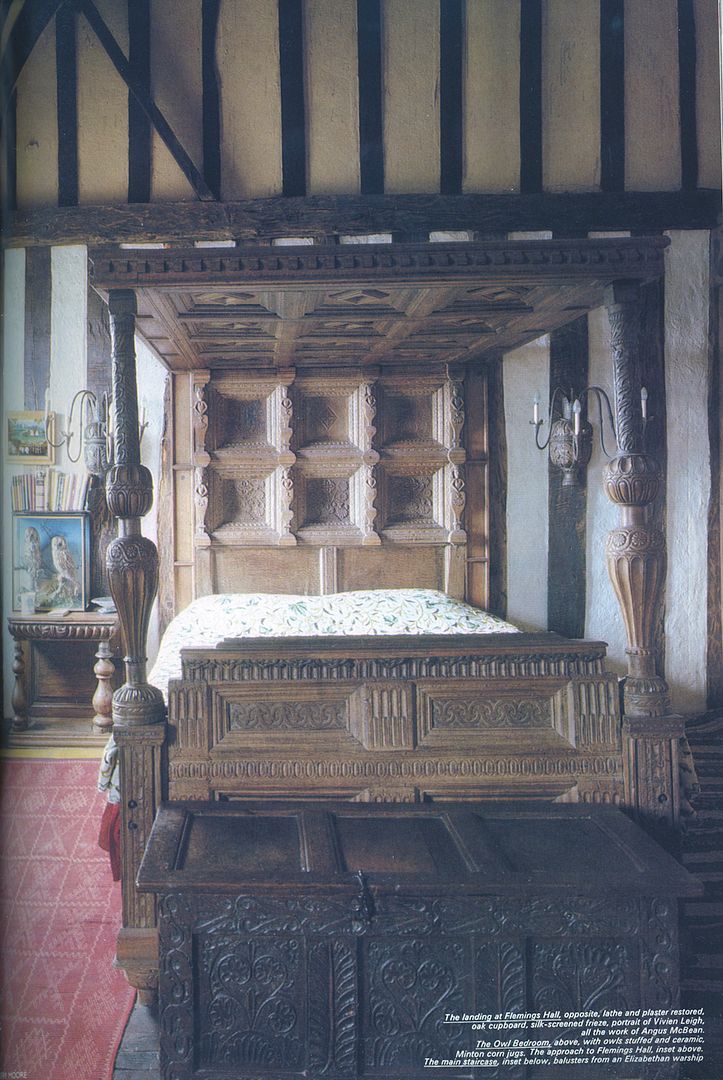
The Owl Bedroom, with owls stuffed and ceramic, Minton corn jugs.
A man of memorable beard and charm, Angus McBean live in Suffolk in this Tudor manor house, a house that he has largely put together with own hands. It is a considerable imaginative work of restoration. his skill as artist and craftsman has been far less heralded than his skill as a photographer but it is evident that, master carpenter with inventive hand and eye, he can make, remake, create or restore anything. He would never describe his work as accurate, it is necessarily idiosyncratic, Tudor England seen through the eyes of someone deeply imbued with theatre of a certain date. Look and the associations dance in your mind: Vincent Korda film sets, Stratford Shakespeare, a whiff of surrealism, a breath of romanticism, pre-war idylls. Whatever liberties Angus McBean may have taken with Flemings Hall, the charm is in its originality.
Built in 1380 by the Bedingfield family, it was altered in 1580, when brick ends were added, and again in 1630 when gables and chimneys were added to these. In Georgian times it gained a plastered facade and portico. By the 1930s, it was in a shocking state of repair, the owners were anxious to sell, could not, and so paneling, chimney pieces, staircases were stripped and shipped to the American market.

Paisley-papered bedroom, with painted faux bamboo Directoire bed- all ribbons and knobs, restored by Angus. Ditto the cane chest, and George Smith Gothic rocker.
When, in the early 1960s, Angus McBean was forced into retirement by a serioUS hip operation, he could in his own original way realise the successful man's country house dream. With friends David Ball and Norman Kelvin, he found Flemings- ringing in their ears were the words: all a family needs to survive is five acres and a Nissen hut. Flemings was no Nissen hut but did appear "more like an empty barn than a house." Its restoration has been Angus' unstinting work. It is now listed Grade I. "I have given a covenant on it to the National Trust which they've accepted because of its two unique features- three scratched sundials on the door which, no, they don't know of another example, and the oval horse collar windows in the brick ends. We've done practically no structural alterations because we wouldn't be allowed to- except pulling a Victorian chimney out of the middle. We had to do the work on the kitchen last because we couldn't have the great chimney breast removed until we had the new roof and we couldn't afford to have the new roof because we'd spent the money we'd saved up for the new roof on the iron gates for the outside" - magnificent, art nouveau, made for the Duke of Westminster in Italy in 1900. "We knew nothing about Tudor materials. We were high Empire and Regency when we came here." Eighteen years ago, suitably ancient materials were still available to the imaginative scavenger. No fourteenth-century wood perhaps, but they learnt to buy from gipsy carts, to ferret in field and hedgerow, bombed London houses, for anything Elizabethan, often from much grander places- the unwanted canopy from a bed, the sawn balusters from the bridge of an Elizabethan warship. People are cannier, prices have soared, such finds are no longer possible.
But with the original choice between materials to rebuild and things which would make for a rich and rare atmosphere, the result is a house that is comfortable and simple. "No Old Master paintings, no really grand furniture, plate not silver- just a good effect. And pottery looks better with oak than the grandest porcelain." The pottery is in decorative collections from nineteenth-century English factories- Minton corn jugs in the Owl Bedroom, Spode Etruscan ware massed along one wall in the kitchen. Pictures are motley- powerful photographs of once and famous stars, glass, tinsel, owls, cats, fibreglass, a portrait of Angus in brocade dressing gown and night cap by the Russian painter Marevna. In the great hall the screen beam is revealed, the ceiling roughly plastered, the fireplace a marquetry of linenfold and pilasters, the floor traditional Suffolk stone flags. One bookcase wall has recessed job doors, there are very theatrical crimson painted leather curtains- trompe-l'oeil of sorts. All woodwork is a miracle of extended, shortened, mixed, matched and dovetailed paneling. On showing one guest to his room Angus remarked: "I made that bed this morning." "Oh, we all have to do that sort of thing nowadays," said the guest, quite unaware that he really meant make, as in build.
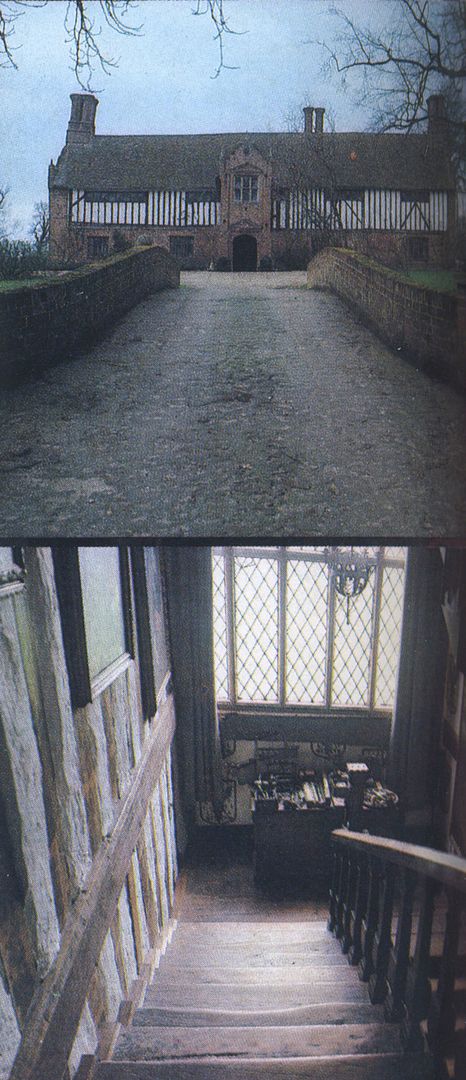
The approach to Flemings Hall, and the main staircase, balusters from an Elizabethan warship.
All his skills throughout a long and prolific life relate to theatre, including not only lathe and plaster and paneling but the restoration of Elizabethan tombs (eighteen in the Tollemache church), theatre masks and puppets, pictures of fibreglass, sequins and satins, the surreal props for his photography, silk-screened wallpapers for Flemings and for friends like Robert carrier at Hintlesham Hall, Beatles record sleeves (the first and the last) and interior decoration. In 1954 he completely redesigned the Academy Cinema- wallpapers, ironwork, carpets, china. But it is his photography, his great surreal and strong theatre work of the 1930s, 40s and 50s, for which he is most and justly famed. Memorable images of memorable stars, of Vivien Leigh (her favourites), of at least seventeen Macbeths and sixteen Hamlets, of the ingenue Audrey Hepburn plucked from the chorus for the Lactocalamin ad where she rises head and shoulders from a classical desert as The Beauty That Dares Come Close. largely unheard of since his retirement to Suffolk, his reputation has been undergoing some renaissance. Where, only ten years ago, no English institution would accept the gift of his glass negatives (Harvard bought the relevant four-and-a-half tons), the National Portrait Gallery has now spent thousands on a few prints. Photographic journals run flattering articles, he has had exhibitions in New York, London, Sydney, and Harvard has also promised a lecture tour and retrospective- which he hopes will not be posthumous. Unlikely since at seventy-six, very spry, he has thrown away his sticks and continues to work- restoring pottery and furniture for the friends with whom he shares the house and who run an antique shop in Debenham.
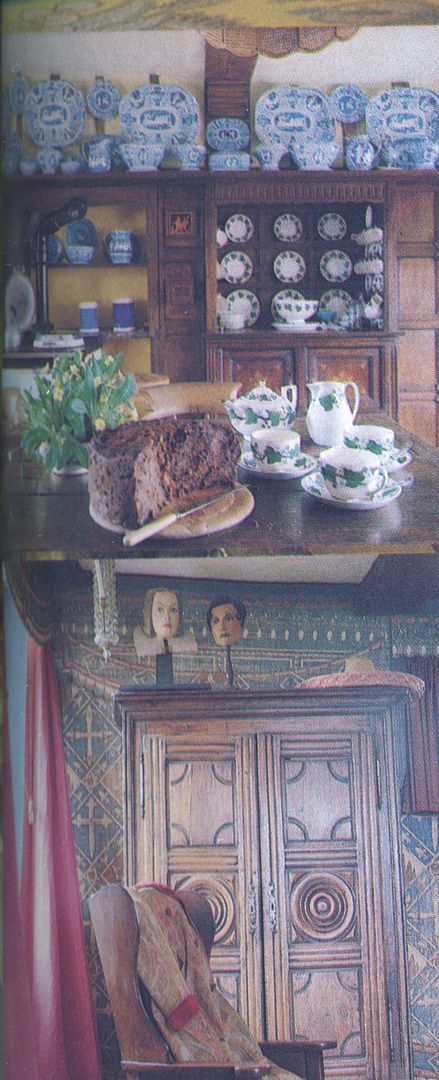
The kitchen with collection of Spode Etruscan ware and table set for tea. Angus McBean's bedroom, theatre masks atop the oak cupboard, dressing-gown over wing chair.
Next year he publishes photographs of Suffolk churches at risk, his six or seven cameras replaced by one Sinar 4x5 plate camera with several leses- an ultra-wide angle lens, and a very slightly soft focus lens- in case any aging actresses appear. "And I use the Hasselblad i always have for snapshotting," the rural idylls of East Anglia where he has so busily come to rest. "Although I had this extraordinary chance that I was number one theatre photographer for thirty years during one of the four great periods of English theatre, i would say that my best piece of work, my most important work, is this house." Amen.
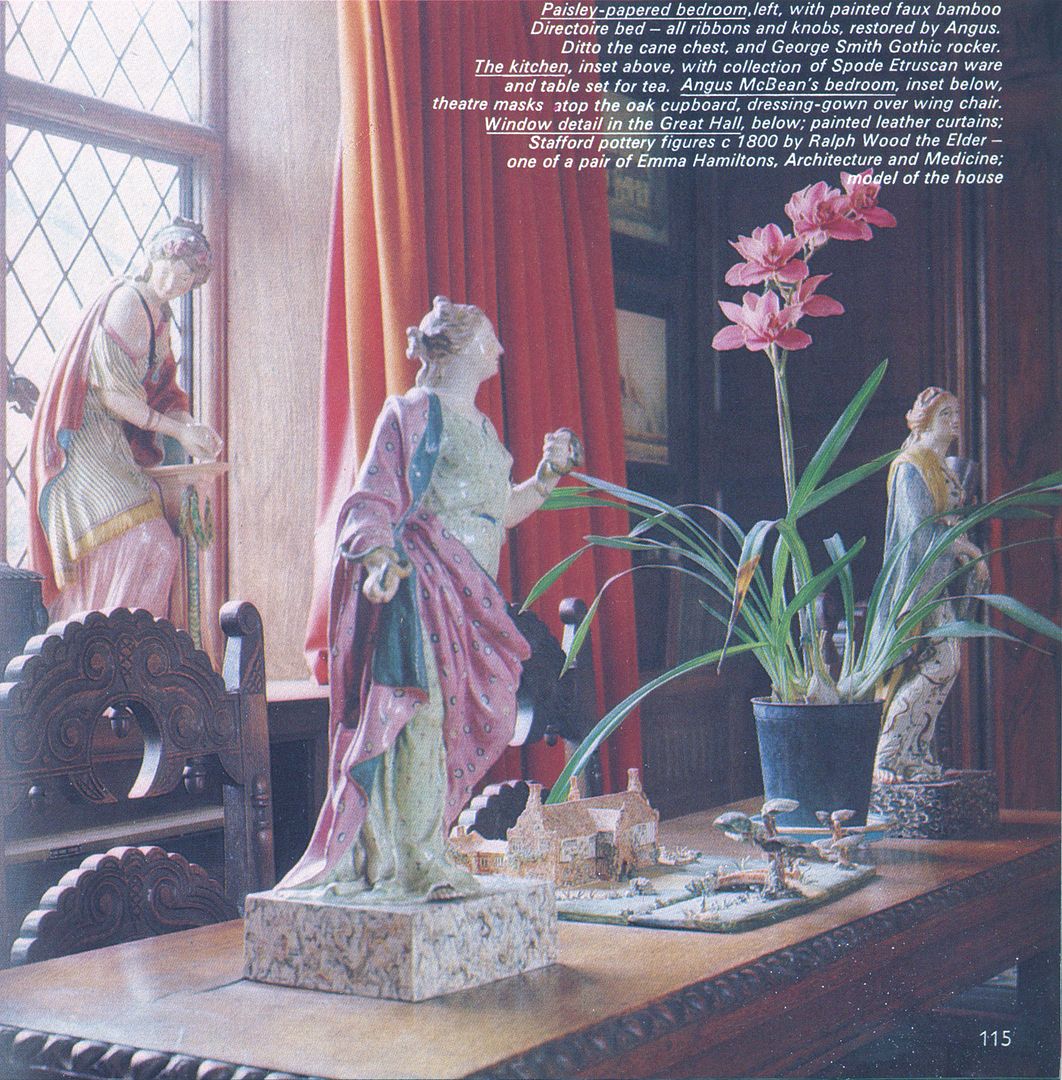
Window detail in the Great Hall: painted leather curtains; Stafford pottery figures c 1800 by Ralph Wood the Elder- one of a pair of Emma Hamiltons, Architecture and Medicine; model of the house.
All photos by Derry Moore from Vogue UK, August 1980.